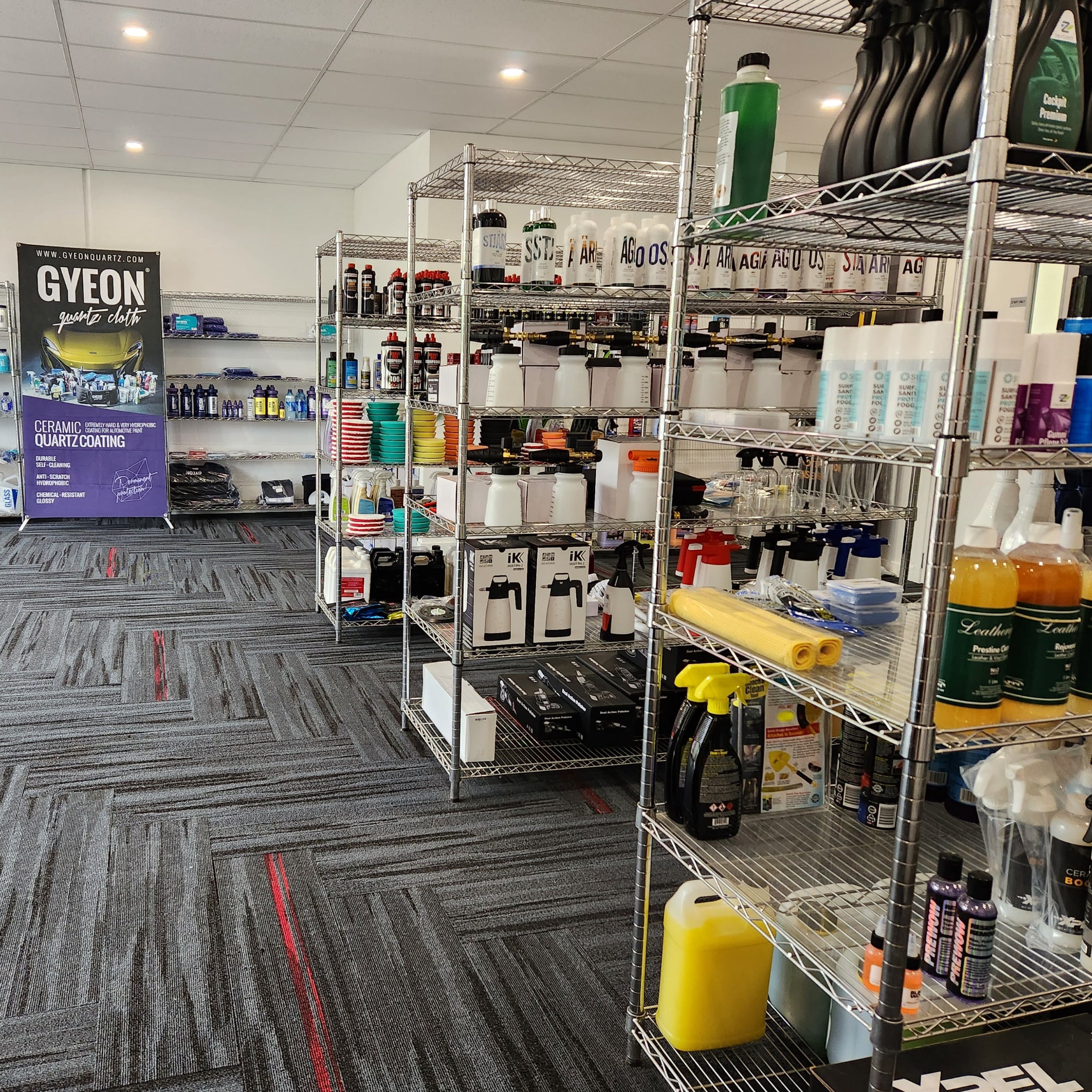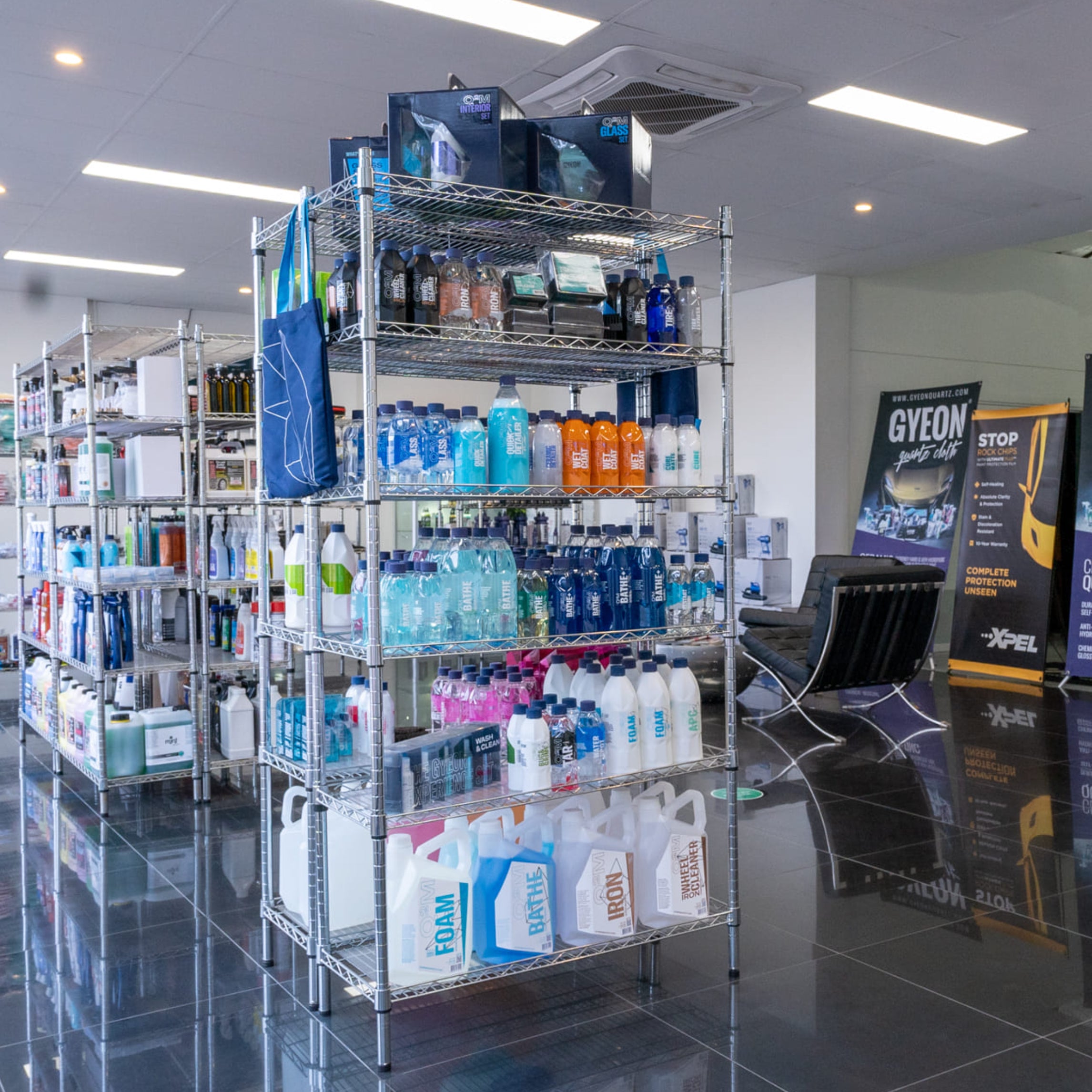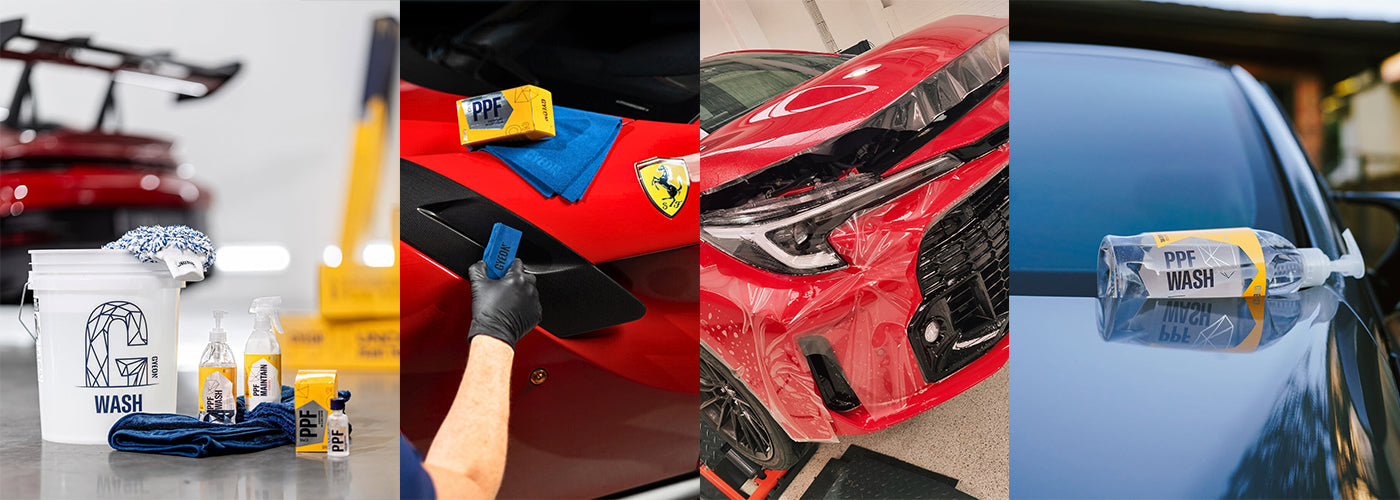We have all been there. You have just washed your pride and joy, stepped back to admire that glossy finish, and then you notice them: those chalky little rings baked into the paint or glass. No matter how much you scrub, they do not seem to budge. Frustrating, right?
The truth is, those marks are not just dried water. They are mineral deposits left behind after the water evaporates. If left too long, they can etch into your paint, dull your glass, and leave your car looking neglected.

The good news is that with the right approach, you can not only remove water spots but also stop them from coming back. In this guide, we will explain what causes them, the different types you may encounter, how to remove them safely, and the preventative habits that will save you time, effort and correction bills in the long run.
What Exactly is a Water Spot?
Unless you are washing with distilled bottled water, every drop that touches your car contains minerals or contaminants. Tap water is rich in calcium, magnesium, and salts. Rain picks up pollutants from the air. Groundwater from sprinklers often carries a heavy mineral load.
When that water dries, the minerals stay behind. On smooth glass, they usually sit on the surface. On porous clear coats, they can dig in and start chemically etching the finish, making them tough to budge.
The Two Types of Water Spots
Not all spots are created equal. In detailing, we generally break them down into two categories.
1. Cosmetic Water Spots: Easier to Tackle
These are the easy ones. They look like chalky circles sitting on top of your paint or glass. If you catch them early, a quick wipe with the right remover will take care of them. They are annoying, but they do not cause lasting damage if you act quickly.
2. Etched Water Spots: Persistent Watermark Challenges
This is where it gets serious. Etched spots happen when minerals have sat too long or have had multiple layers form, and have started corroding the surface. They are no longer lying on top; they have bitten into your clear coat or glass. At this stage, sprays and quick wipes will not fix them. You will need polishing, or in some cases, professional correction.
Removing Water Stains: Your Proven Action Plan
The trick is to start simple and only move to stronger methods if you have to.
Step 1: Chemical Removers (Your First Line of Defence Against Hard Water Marks)
For fresh water spots, most can be handled with a good wash. Giving the car a thorough washing, ideally with a foam pre-wash, will remove any loose mineral deposits, removing your unsightly spots.
But what if you don’t want to have to go to all that effort just to remove a few spots? Are there any quick and simple options that work? Well, under the right conditions, there are!
Dedicated Water Spot Removers
For something safer and more effective, use a purpose-made product. Options like GYEON Q²M WaterSpot are formulated to dissolve deposits quickly while staying safe for coatings, paint and glass. They work faster than DIY options and are less risky on delicate finishes.

While this method can be used at the first sight of a water spot, you should be careful when you use it. Let’s take 2 these two scenarios:
- You’ve just finished washing your car outdoors, and while towel drying the bonnet, the boot dries from the sun, leaving some spots
- You’ve just gone for a drive in the rain, parked in your garage overnight, and the next morning, you notice some water spots on the roof
The 1st example, you should use a dedicated spot remover to clean up the job then and there. For the 2nd, the rain could have left larger particulates that even a soft microfibre cloth could drag around, increasing the chance of scratching your surface. In the 2nd example, you may be better off simply giving your car a thorough wash (and dry) rather than risk creating scratches by wiping the marks away.
The DIY Method: Can I use a Vinegar Spray?
If you are familiar with removing water spots from your bathroom surfaces, you might be familiar with the following method: mix 50/50 white vinegar and distilled water in a spray bottle; use the vinegar’s mild acidity to dissolve mineral deposits. Spray, let it dwell for 5–10 minutes, then gently wipe with a microfibre towel and rinse.
It is cheap and effective for some glass surfaces, but when it comes to using this option on car surfaces, it is dangerously acidic. If left on too long, mixed improperly or the wrong type of Vinegar is used, you can do more harm than good. This is why we always recommend using a dedicated remover.
Step 2: Machine Polishing (Only Way to Remove Etched-in Spots)
Unfortunately for those reading this article looking for simple water spot removal methods, machine polishing is more often than not your only option to remove water spots. This is often because, by the time most people notice water spots, they are ingrained over enough of your paint that it is impossible to miss. At this point, a simple wash or chemical spray will not be enough to shift them.

We have covered the proper methods for polishing your car in previous blogs, which you can read here. If you want to explore a machine polish solution to remove etched water spots, our Mint ProTools RO Polisher DAS6-Pro V2 starter kit is a perfect option.
Some quick notes, though, as polishing is an advanced method. Done incorrectly, it can cause more damage than the water spots ever did.
- Always use the right pad and polish for the surface.
- Always work on a thoroughly clean surface
- Start with the least aggressive method and increase only if needed.
- If you are unsure, it may be best to take your car or glass to a professional detailer.
We don’t want to scare you with these notes. If you are looking for simple solutions for dealing with water spots and don’t want to have to resort to polishing, you just need to follow this rule: prevention is easier than restoration. Ideally, you want polishing to be your last resort, not your first step.
Prevention: How to Keep Water Spots from Maring Car Paint
Dry Immediately to Prevent Water Stains
Never let water sit. After washing, dry your car with a quality microfibre drying towel or a dryer or blower to remove water from badges, trims and mirrors where spots tend to appear. This is easily the best piece of advice we can give. If you can get into the habit of properly drying your car, you will save yourself a lot of pain.
Wash in the Shade
Sunlight speeds up evaporation and almost guarantees spots. Wash indoors ideally, but if that is not an option, the shade or during cooler times of day can also work.
Avoid Dirty Water
Be mindful of where your water is coming from. Bore water and other unfiltered sources often contain high levels of spot-forming minerals. Parking near sprinklers that run off groundwater is a common cause of heavy spotting, and washing your car with hard, untreated water will only make the problem worse. Wherever possible, avoid unfiltered sources and use mains water or, better yet, a filtered supply to reduce the risk.
Protective Coatings: Deter Hard Water Mark Formation
Adding protection makes a huge difference. A solid layer of wax coating or sealant, for instance, can effectively guard against hard water spots, transforming regular washes into a crucial act of proactive care.
- Ceramic coatings create an incredibly thin hydrophobic layer that makes water bead and roll off. Fewer droplets sitting on the paint means fewer minerals left behind, so water spots may not form at all. They also make cleaning easier, which helps prevent spots from forming. GYEON MOHS EVO or Gtechniq Crystal Serum Light are extremely versatile and durable coating options.
- As previously discussed, PPF (Paint Protection Film) acts as a physical barrier to your paint work. Spots can still form on the film, but they are easier to clean and less likely to cause permanent damage. Combine PPF with a ceramic coating for the best of both worlds, ensuring a longer-lasting shield against the consequences of high mineral content.
- In a similar way to Ceramic Coatings, wax or sealants can add an extra layer of defence, aiding in the removal of mineral deposits and maintaining the car's shine. The major difference is that these options tend to be less durable, lasting only weeks or months instead of years. Options like Dodo Juice Supernatural Wax or Stjarnagloss Parla Spray Sealant are solid options we strongly recommend.
- With any of the above options, investing in a quick detailing spray like Gyeon WetCoat or Duragloss Aquawax is an incredible way to boost hydrophobicity in the short term, reducing the chances for water to dry and leave a mark.
Conclusion: Consistency is Key in Water Spot Removal
Water spots may look small, but ignore them, and they will turn into etched scars that require expensive correction. The key is understanding what they are, removing them quickly, and, most importantly, building habits that stop them from forming in the first place.
Dry immediately, wash in the shade, and protect your paint with coatings or PPF. These simple steps make a massive difference.
With the right knowledge and consistent habits, you can keep your car spotless, glossy and protected without the stress of chasing stubborn marks every weekend.
FAQs on Getting Rid of Water Spots on Cars
Q: Can I use vinegar on my car paint?
Yes, but you shouldn’t. Vinegar works, but homemade solutions have far too many variables for us to recommend. You are always safer using a purpose-made spot cleaner.
Q: Should I dry my car after driving in the rain?
No. While it would be ideal to remove rain from your car, rain contains particulates that can scratch your surface if dragged around with a drying towel. If your car is ceramic coated, you can try using a car dryer, but without a coating, this can be far too time-consuming to be practical.
Q: Are etched water spots permanent?
Not usually. They cannot be wiped away, but machine polishing can often restore the finish.
Q: Do ceramic coatings stop water spots completely?
No coating is invincible, but ceramics make spots less likely to form and much easier to remove.
Q: Can hard water filters help?
Yes. Using filtered water for washing drastically reduces mineral deposits.





